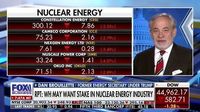In a sweeping move that has sent shockwaves through the renewable energy sector, the Trump administration announced on September 2, 2025, that it is cancelling $679 million in federal funding for a dozen offshore wind projects across the United States. The decision, revealed by US Transportation Secretary Sean P. Duffy through an official Department of Transportation (DOT) news release, marks one of the most significant reversals of clean energy policy in recent years—and has ignited a fierce debate over the future of America’s energy landscape.
The rescinded funds, which had been allocated to projects in 11 states, include $435 million for a floating wind farm in northern California and $47 million for an offshore wind initiative in Maryland. The Maryland project had already faced scrutiny and was previously targeted for cancellation by the Interior Department. According to the DOT, the withdrawn funding will be redirected toward revitalizing ports and maritime infrastructure—a move the administration says will “restore America’s maritime dominance and prevent waste.”
“Wasteful wind projects are using resources that could otherwise go towards revitalizing America’s maritime industry,” Secretary Duffy said in a statement reported by Associated Press. “Thanks to President Trump, we are prioritizing real infrastructure improvements over fantasy wind projects that cost much and offer little.”
This latest action is only the most recent in a string of policy decisions targeting renewable energy sources. In recent weeks, the Trump administration has stepped up what the AP describes as a “crusade against wind and other renewable energy sources,” including cutting federal funding and canceling projects that had received approval under former President Joe Biden. The administration’s stated goal is to restore US “energy dominance” by increasing reliance on fossil fuels—coal, oil, and natural gas—despite their well-documented contributions to greenhouse gas emissions and climate change.
The impact of these cancellations is already being felt across the industry. Just last week, the Energy Department withdrew a $716 million loan guarantee intended to upgrade transmission infrastructure for an offshore wind project in New Jersey. Meanwhile, construction of the $4 billion Revolution Wind farm off the coast of Rhode Island and Connecticut—a project developed by Danish energy giant Orsted—was abruptly halted. The Interior Department cited unspecified national security concerns as the reason for stopping the Revolution Wind project, which was expected to be the first commercial-scale offshore wind farm for Rhode Island and Connecticut and capable of powering more than 350,000 homes.
Orsted, the developer behind Revolution Wind, has stated it is currently evaluating the financial impact of the stoppage and is considering legal action. The abrupt halt to what was a nearly completed project has rattled not only investors but also state officials and labor unions who had pinned their hopes on the economic and environmental benefits of offshore wind.
Democratic officials and union leaders have been quick to condemn the administration’s actions. Rhode Island Governor Dan McKee did not mince words, calling the move “an attack on our jobs … our energy … [and] our families and their ability to pay the bills,” as cited by Associated Press. Patrick Crowley, president of the Rhode Island AFL-CIO, pledged ongoing resistance: “We’re going to fight [Trump] every step of the way, no matter how long it takes.”
Supporters of the cancelled projects warn that these decisions threaten not only thousands of jobs but also state-level climate goals and the affordability of household energy bills. According to the AP, Democratic governors and unions argue that the loss of federal funding and the abrupt halting of construction could lead to higher electricity prices, derail clean energy targets, and undermine local economies that were counting on the growth of offshore wind.
The administration’s opposition to wind energy is not new. President Trump has repeatedly voiced his disdain for wind power, describing turbines as “ugly and expensive” and arguing that “smart” countries do not rely on them. At a recent Cabinet meeting, Trump doubled down on his stance, stating, “We’re not allowing any windmills to go up unless there’s a legal situation where somebody committed to it a long time ago.” He has also blamed renewable energy sources for rising electricity prices, claiming that renewables are responsible for recent spikes in consumer costs—a claim that many energy experts dispute.
The halting of Revolution Wind is not an isolated incident. Earlier this month, the administration cancelled a major wind farm in Idaho, a project that had been approved during Biden’s tenure but faced local opposition due to its proximity to a historic site where Japanese Americans were incarcerated during World War II. The administration has also reviewed and, in some cases, rescinded permits for other offshore wind and solar developments, and has stopped work on the Empire Wind project in New York, though construction was later allowed to resume.
For the Trump administration and its supporters, these moves are about redirecting federal resources to what they see as more practical and immediate infrastructure needs—such as upgrading ports and supporting the maritime industry. “This action will ensure [that] federal dollars are prioritized towards restoring America’s maritime dominance and preventing waste,” the DOT statement emphasized.
On the other hand, critics argue that the administration is undermining the nation’s transition to cleaner, more sustainable energy sources at a critical moment. Scientists and environmental advocates have consistently pointed out that wind and other renewables are essential to combating climate change and meeting international emissions targets. The abrupt policy reversals, they argue, risk setting back the US clean energy sector just as it was gaining momentum.
The broader context is a country divided over its energy future. On one side are those who see fossil fuels as the backbone of American prosperity and security, and who want to double down on domestic oil, gas, and coal. On the other are advocates for renewables, who warn that clinging to the old energy paradigm will leave the US behind in a rapidly changing global market—and expose communities to the escalating risks of climate change.
As the dust settles from this latest round of cancellations, the fate of America’s offshore wind industry hangs in the balance. With billions of dollars and thousands of jobs on the line, and with climate goals increasingly urgent, the debate over the country’s energy direction is far from over. For now, the message from the Trump administration is clear: the era of big federal support for offshore wind is, at least temporarily, over.




